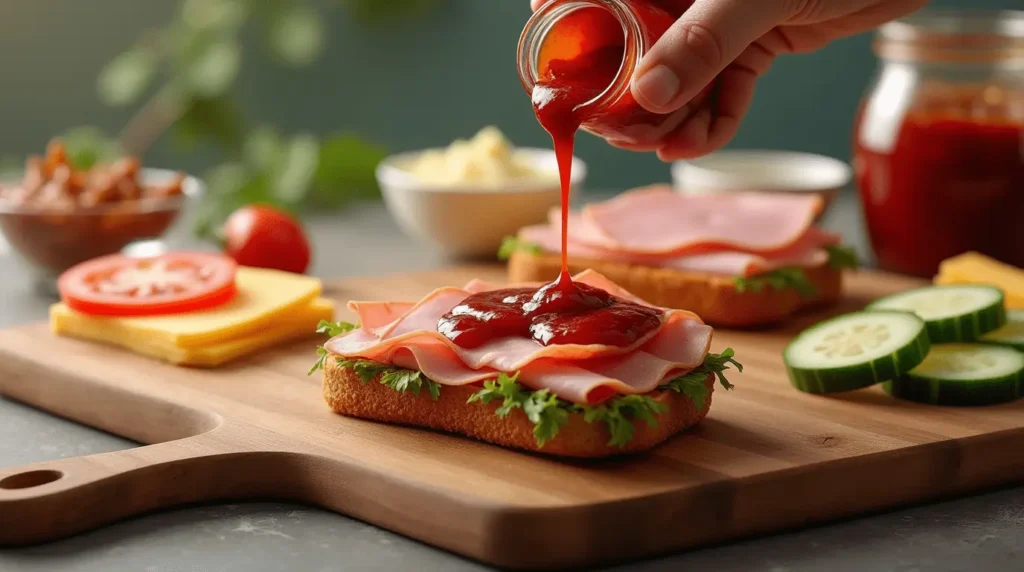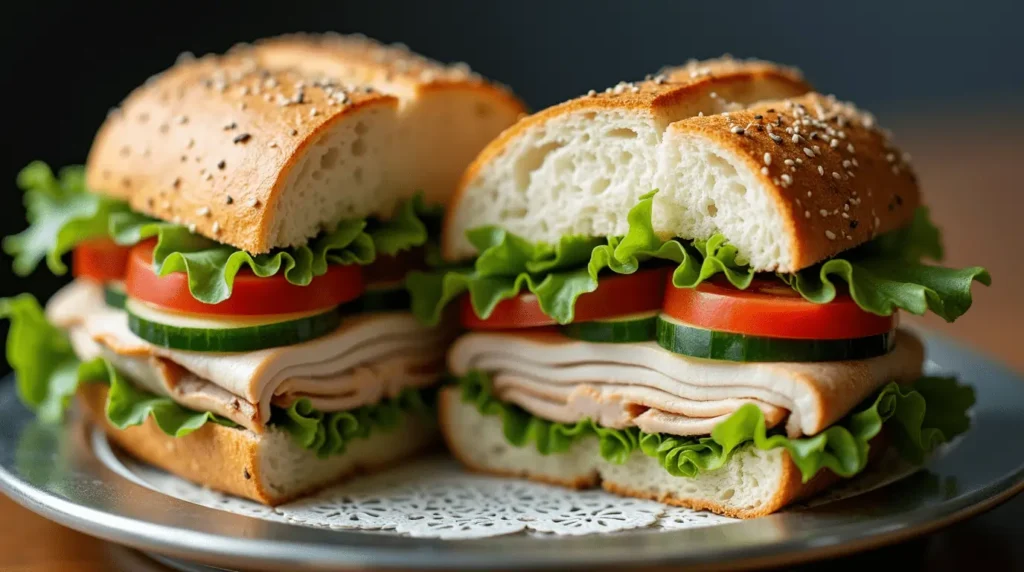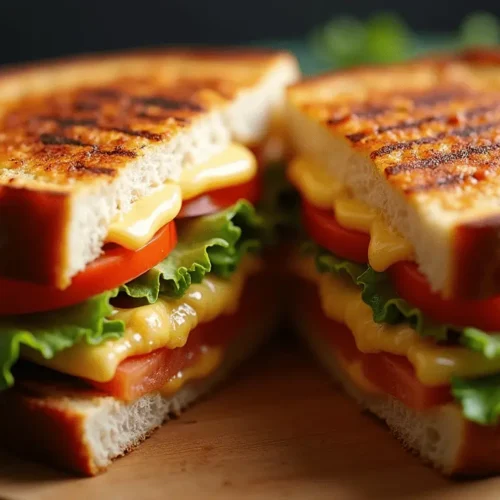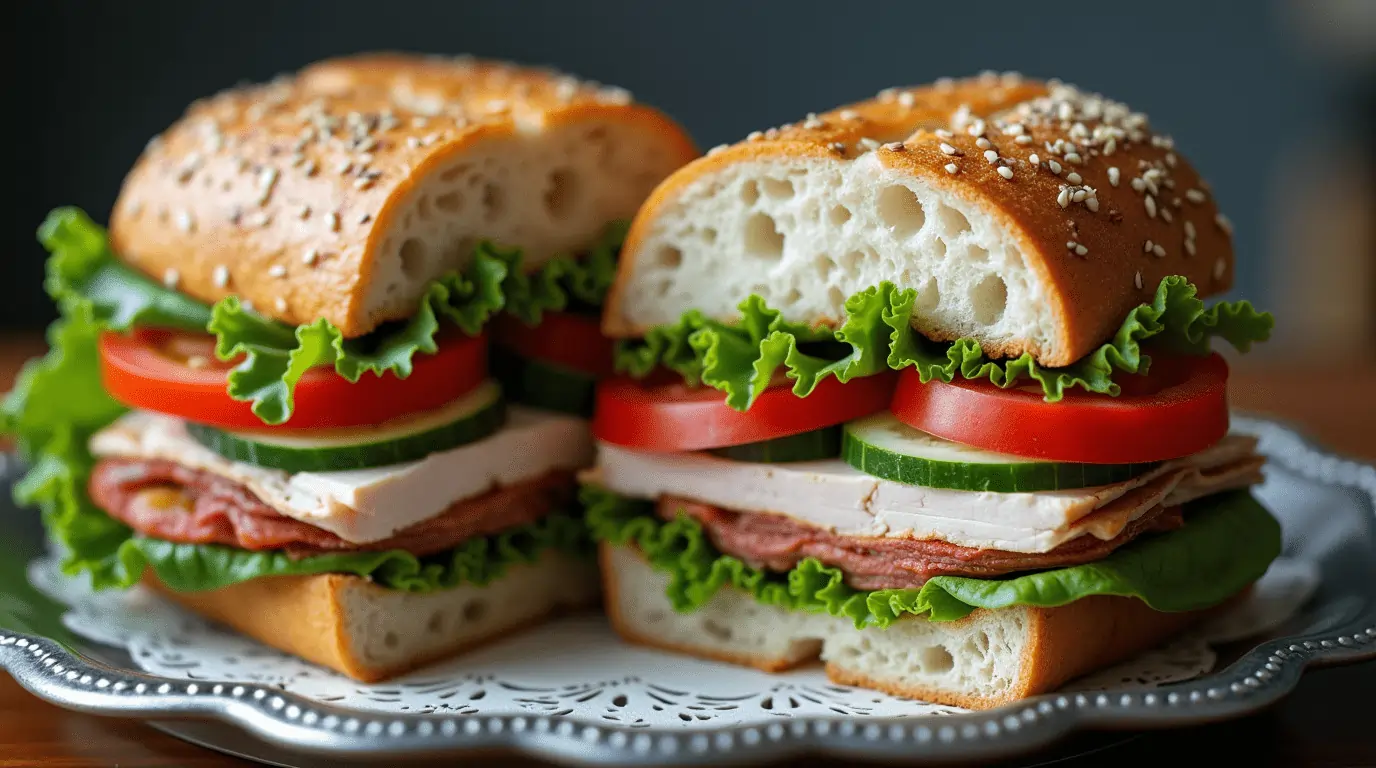A knob sandwich is not just a meal; it’s a harmonious blend of simplicity and sophistication that has stood the test of time. This culinary classic, known for its versatility, appeals to various palates. Whether you’re preparing a quick lunch or a hearty snack, the knob sandwich delivers a satisfying experience that is both comforting and flavorful.
The essence of a knob sandwich lies in its perfect balance of textures and tastes. The crunch of fresh vegetables, the tenderness of premium proteins, and the creaminess of thoughtfully chosen spreads come together in each bite. It’s a dish that encourages creativity, allowing you to customize it with endless combinations of ingredients.
Steeped in tradition yet adaptable to modern trends, the knob sandwich transcends culinary boundaries. Each element plays a crucial role in making this sandwich a masterpiece, from the type of bread you choose to the fillings you layer. Whether you’re crafting a simple classic or experimenting with gourmet variations, the knob sandwich is a blank canvas for your culinary artistry.
In this guide, we’ll explore everything you need to know to create an irresistibly good knob sandwich, from selecting the right ingredients to perfecting the final presentation.
Table of Contents
What Is a Knob Sandwich?
A knob sandwich is a term that sparks curiosity among culinary enthusiasts. At its core, it refers to a sandwich crafted with a focus on simplicity and robust flavors. The name “knob” often relates to the rounded shape of bread rolls or buns used as the base. These are sliced horizontally and filled with various ingredients, ranging from savory meats to fresh vegetables and artisanal spreads.
The beauty of a sandwich lies in its adaptability. Depending on the fillings chosen, it can be a hearty meal or a quick snack. Traditional options include cured meats, sharp cheeses, and tangy condiments, while modern variations explore plant-based proteins and exotic flavors. This versatile creation appeals to diverse palates, making it a beloved option for picnics, lunches, or casual dining experiences. Crafting a knob sandwich recipe offers endless possibilities for culinary creativity.
Why You Should Try a Knob Sandwich
A knob sandwich is more than just a meal; it’s an experience. Its unique blend of flavors and textures ensures every bite is an adventure. The crispiness of fresh bread, the creaminess of condiments, and the robustness of protein create a symphony of tastes that are hard to resist.
Not only is it perfect for any meal be it breakfast, lunch, or dinner—but it also shines as a picnic staple or party snack. What’s more, the knob sandwich is incredibly versatile. You can tailor it to your preferences, experimenting with different breads, proteins, and add-ons to suit your mood or dietary needs.
Ingredients and Tools for the Perfect Knob Sandwich
Essential Ingredients
- Bread Options: The foundation of your sandwich is crucial. Opt for bread like sourdough, ciabatta, or a baguette for their excellent texture and flavor. These options provide a sturdy base to hold your fillings while adding character to each bite.
- Protein Choices: Classic proteins such as ham, turkey, or roast beef bring depth and satisfaction. For vegetarians, tofu or tempeh marinated in flavorful sauces can be equally delightful.
- Fresh Vegetables: Elevate your sandwich with crisp lettuce, juicy tomato slices, and crunchy cucumber. These ingredients add freshness and balance to the richness of proteins and spreads.
- Condiments and Spreads: A well-chosen spread ties everything together. Mustard and mayonnaise are timeless, while pesto or hummus can offer an exciting twist.
Recommended Tools
- Knife for Slicing: A sharp knife ensures clean cuts, preventing the bread from tearing and the fillings from spilling out.
- Cutting Board: A sturdy cutting board provides a stable surface for prepping ingredients.
- Sandwich Press or Grill Pan (Optional): Toasting your sandwich can enhance its flavor and texture, creating a golden crust that’s hard to resist.
Step-by-Step Guide to Making a Knob Sandwich

Step 1: Select and Prepare the Bread
Choose bread that complements your fillings and slice it evenly. For an extra touch, lightly toast the bread to enhance its flavor and provide a satisfying crunch.
Step 2: Spread the Condiments Evenly
Apply your chosen spreads generously but evenly across each slice of bread. This ensures every bite is flavorful without overwhelming other ingredients.
Step 3: Layer the Proteins and Cheeses
Place your proteins first, followed by slices of cheese. The cheese acts as a binder, keeping the layers intact and adding a creamy element.
Step 4: Add Vegetables and Creative Fillings
Top with vegetables like lettuce, tomatoes, and cucumbers. Consider adding extras like avocado slices, pickles, or roasted peppers for a gourmet touch.
Step 5: Assemble and Toast (Optional)
Carefully assemble the sandwich and press it gently. If desired, toast it in a sandwich press or grill pan for a warm, melty finish.
Tips and Tricks for an Irresistible Knob Sandwich
- Balance Flavors: Ensure a mix of savory, sweet, and tangy elements for a well-rounded taste.
- Toasting Tips: If toasting, use moderate heat to achieve a golden crust without burning.
- Creative Ideas: Experiment with add-ons like caramelized onions, apple slices, or specialty cheeses for an elevated experience.
Serving Your Knob Sandwich Recipe
Pair your knob sandwich with complementary sides like crisp potato chips, a fresh green salad, or a comforting bowl of soup. Presentation matters too—serve it on a wooden board or a colorful plate to enhance the dining experience.
How to Store and Reheat a Knob Sandwich Recipe
- Storing: Wrap the sandwich tightly in parchment paper or plastic wrap and store it in the refrigerator. For best results, consume within 24 hours.
- Reheating: To reheat, use a toaster oven or grill pan to revive the sandwich’s texture without making it soggy.

7 Creative Fillings to Elevate Your Knob Sandwich
- Avocado and smoked salmon for a luxurious touch.
- Grilled vegetables and feta for a Mediterranean vibe.
- Shredded chicken with barbecue sauce for a smoky flavor.
- Caprese-inspired layers with mozzarella, tomato, and basil.
- Spicy hummus with roasted chickpeas for a vegan delight.
- Prosciutto with fig spread and arugula for a gourmet twist.
- Turkey with cranberry sauce for a festive feel.
Common Mistakes to Avoid When Making a Knob Sandwich
- Overstuffing: Too many ingredients can make the sandwich difficult to handle and eat.
- Using Unsuitable Bread: Choose bread that complements your fillings and can hold up to them without becoming soggy.
- Skipping Key Layers: Don’t skimp on condiments or fresh vegetables, as they add flavor and balance.

Knob Sandwich
Ingredients
- 2 slices sourdough, ciabatta, or baguette
- 4 oz ham, turkey, roast beef, or tofu
- 2 lettuce leaves
- 3 tomato slices
- 4 cucumber slices
- 1 tbsp mayonnaise
- 1 tsp mustard
- 2 slices of cheddar cheese
- ½ avocado, sliced
- 2 tbsp caramelized onions
Instructions
- Choose your preferred bread and slice it if needed.
- Spread mayonnaise and mustard evenly on both bread slices.
- Add a layer of protein, ensuring even coverage.
- Place fresh vegetables like lettuce, tomato, and cucumber on top.
- Add optional toppings such as cheese, avocado, or caramelized onions.
- Assemble the sandwich and toast for 3–5 minutes if desired.
- Slice the sandwich in half and serve immediately.
Notes
- Suggest gluten-free bread for a gluten-free version.
- Replace proteins with plant-based options for a vegetarian twist.
- Pair with chips, a side salad, or a cup of soup for a complete meal.
FAQs About the Knob Sandwich
What bread works best for a knob sandwich?
The right bread can elevate a knob sandwich from ordinary to extraordinary. Opt for hearty, rustic options like sourdough, which offers a slightly tangy flavor and sturdy texture. Ciabatta is another excellent choice, with its airy interior and crispy crust. A fresh baguette, with its light and chewy crumb, also complements the fillings beautifully. Avoid overly soft or flimsy bread, as it may not hold up to the sandwich’s rich layers. Ultimately, the bread should provide both structure and flavor, allowing the fillings to shine in every bite.
Can it be made gluten-free or vegetarian?
Absolutely! A knob sandwich is easily adaptable for both gluten-free and vegetarian diets. To make it gluten-free, simply swap out the traditional bread for a high-quality gluten-free option, such as a sturdy rice flour-based loaf or gluten-free sourdough. For a vegetarian twist, replace the meats with flavorful alternatives like grilled vegetables, roasted portobello mushrooms, or marinated tofu. Add rich, plant-based spreads such as hummus or avocado for extra creaminess. The knob sandwich can be customized to fit various dietary needs while still offering a delicious and satisfying meal.
How long can you store it safely?
A knob sandwich can be safely stored in the refrigerator for up to 24 hours. To preserve freshness, wrap it tightly in wax paper or plastic wrap to prevent the bread from becoming soggy. If you plan to store it for longer, consider separating the fillings from the bread and assembling it fresh later. While a knob sandwich can be refrigerated, it’s best enjoyed within a day for optimal texture and flavor. Ensure the leftovers are free from any signs of spoilage before eating.
What is a knob sandwich?
A knob sandwich is a delightful and versatile creation, typically consisting of hearty bread filled with an array of ingredients. It combines savory proteins, fresh vegetables, and flavorful spreads, offering a perfect balance of textures. While the name may sound unconventional, the knob sandwich is loved for its simplicity and ability to be customized to suit various tastes. Whether it’s a classic combination of deli meats or a more creative vegetarian version, this sandwich has earned its place as a timeless favorite in kitchens around the world.
What is a Swedish open sandwich called?
A Swedish open sandwich, known as a smörgås, is a traditional dish that consists of a single slice of bread topped with a variety of ingredients. Unlike a typical sandwich, it is open-faced, allowing the ingredients to shine. The knob sandwich, though not Swedish, shares similarities in its versatility, where different toppings can be added to suit personal preferences. In Sweden, smörgås can feature everything from pickled herring to fresh vegetables, creating a flavorful and satisfying meal. This open-faced approach offers endless possibilities for creative fillings.
What is a wedgie sandwich?
A wedgie sandwich is a unique take on the traditional sandwich, featuring two halves of a crisp lettuce wedge as a replacement for bread. This low-carb alternative is often filled with deli meats, cheeses, fresh vegetables, and spreads, making it both refreshing and flavorful. While distinct from a knob sandwich, the wedgie sandwich shares the same versatility, allowing endless customization to suit dietary preferences. Perfect for those seeking a lighter option, the wedgie sandwich delivers all the satisfaction of a classic sandwich without the bread.
What are the two types of sandwiches?
Sandwiches can be broadly categorized into closed and open-faced varieties. A closed sandwich consists of fillings neatly tucked between two slices of bread, like the classic knob sandwich, which combines layers of protein, vegetables, and spreads. Open-faced sandwiches, on the other hand, use a single slice of bread as a base, showcasing toppings such as smoked salmon, eggs, or fresh greens. Both types offer versatility and creativity, allowing endless combinations of ingredients to suit any palate, from simple meals to gourmet creations.
Conclusion
The knob sandwich is more than just a simple meal it’s a culinary experience that blends tradition with versatility. Whether you’re crafting a classic version with hearty proteins and fresh vegetables or experimenting with gourmet twists, this sandwich offers endless possibilities for creativity. Its ability to cater to diverse tastes and dietary needs makes it a staple for any occasion, from casual lunches to sophisticated gatherings.
By choosing quality ingredients, balancing flavors, and exploring unique fillings, you can transform the knob sandwich into a personalized masterpiece. With its satisfying textures and flavors, it’s a dish that invites you to savor every bite. Now that you’ve learned the art of creating an irresistibly good knob sandwich, it’s time to put your skills to the test. Gather your favorite ingredients, embrace your creativity, and enjoy the rewarding process of making a sandwich that’s as delightful to prepare as it is to eat.

